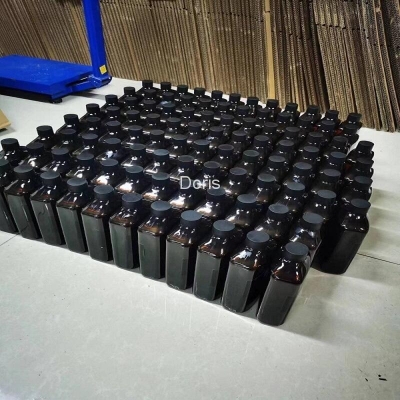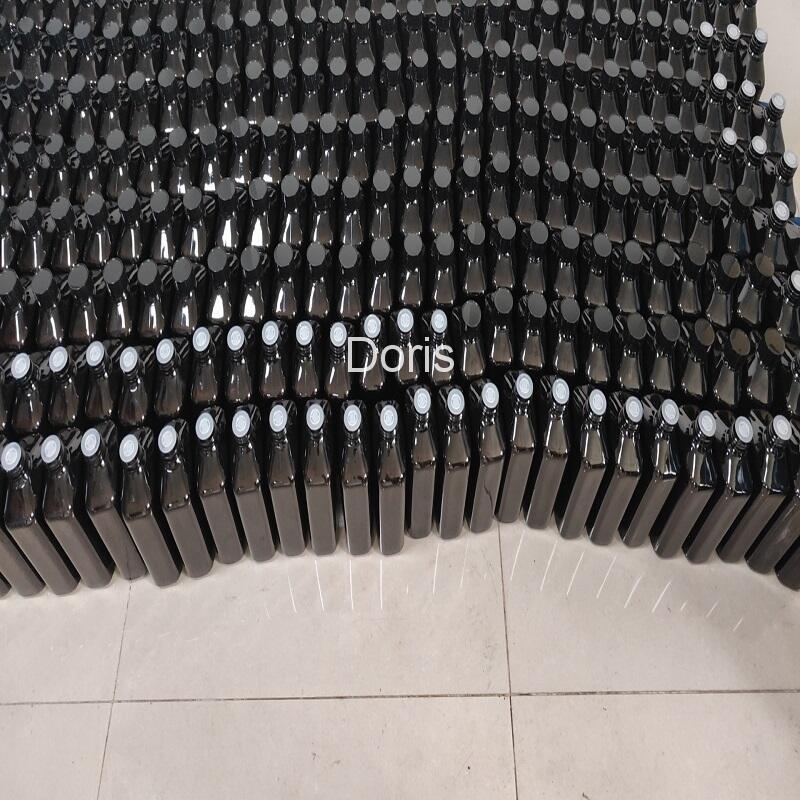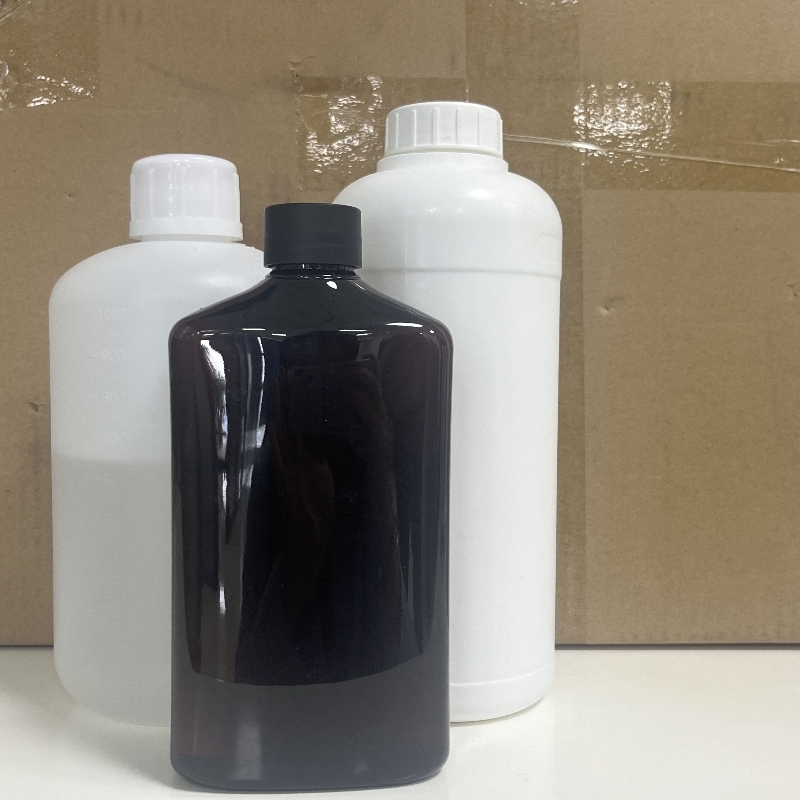What are the major HIV studies or findings in August 2017?
-
Last Update: 2017-08-30
-
Source: Internet
-
Author: User
Search more information of high quality chemicals, good prices and reliable suppliers, visit
www.echemi.com
[market analysis of chinapharma.com] what are the major HIV studies or findings in August 2017? Bio Valley editor combed the news about HIV research reported by Bio Valley this month for you to read Human immunodeficiency virus (HIV), or AIDS (acquired immunodeficiency syndrome) virus, is a kind of virus that causes the deficiency of human immune system In 1983, HIV was found in the United States It is a lentivirus that infects cells of the human immune system It is a retrovirus HIV destroys the T lymphocyte of human body, and then blocks the process of cellular immunity and humoral immunity, leading to the paralysis of the immune system, which leads to the spread of various diseases in human body, and eventually leads to AIDS Due to the rapid variation of HIV, it is difficult to produce specific vaccine, so far there is no effective treatment, which poses a great threat to human health According to who statistics, there were 36.7 million people living with HIV in the world in 2015, most of them in low and middle-income countries It is estimated that the number of new HIV infections in 2015 was about 2.1 million So far, 35 million people have died of HIV infection, including 1.1 million in 2015 Since the who announced the HIV pandemic in 1987, HIV infection has led to 39 million deaths So far, HIV is still one of the major public health challenges in the world Therefore, it is urgent to study the function of HIV in depth to help researchers develop new treatments that can effectively combat this disease In order to prevent the massive replication of virus from damaging the immune system, people with HIV need to take art every day or even for life Although it has been proved that art can effectively inhibit the onset of AIDS, but such drugs are expensive, time-consuming and labor-consuming and have serious side effects There is an urgent need to find a cure for HIV infection What are the major HIV studies or findings in the coming August? Bio Valley editor combed the news about HIV research reported by Bio Valley this month for you to read 1 Ebiomedicine: it's a play to eradicate HIV! The drug vorinolta makes latent HIV easy to be eliminated HIV can be hidden in the human body in a latent state, which challenges the cure of 40 million people infected with HIV Now, in a new study, researchers from the University of North Carolina at Chapel Hill in the United States have confirmed that the drug vorinostat can reverse this latency, leading to the expression of HIV antigens on quiescent CD4 T cells They have developed a test for the production of HIV antigens that includes immune effectors that can clear the virus The related research results were published online in the Journal of ebiomedicine on July 28, 2017, under the title of "vorinostat renders the replication competent late reservoir of human immunity virus (HIV) vulnerable to clearance by CD8 T cells" By triggering the production of HIV antigens, vorinolta creates a window of vulnerability for the elimination of HIV library The researchers developed a latency clearance assay (LCA) to measure the HIV antigen activity triggered by vorinolta The assay also includes immune effectors that clear cells that express the virus's antigens "Measuring the ability of a latent reversal agent to induce the production of related HIV antigens is technically challenging," said Dr Julia sung, author of the paper and assistant professor of medicine at the Department of infectious diseases at the University of North Carolina at Chapel Hill Using a latent clearance assay, we detected that vorinolta, a latent reversal agent that enters clinical trials, can induce a recognizable level of HIV protein to be produced on the cell surface, allowing subsequent clearance of infected cells " 2 PNAs: a new way to track HIV infection Recently, scientists from Northwestern University developed a new way to track HIV infection, thus linking each individual virus infection particle with the process of sorting out the disease This discovery will promote our further understanding of the HIV life cycle, and then help the establishment of new HIV prevention and treatment methods The results were published in a recent issue of PNAS In the process of infection, HIV will fuse with the target immune cells and release their capsid, that is, the shell surrounding the genetic material, into the cytoplasm of the target cells Since then, the capsid will be depolymerized through the "uncoating" process, which is critical to the reverse transcription of viral RNA and the normal function of attacking cells In this study, the researchers used a new method of living cell fluorescence imaging to identify a single virus particle associated with infection The authors found that the "uncoating" process occurs early in the invasion of cytoplasm, and begins within 30 minutes of cell fusion 3 Gilead's new AIDS drug is expected to be put on the market soon after being given priority review Gillead Sciences recently announced that the U.S FDA has granted it the priority review qualification of the HIV cocktail therapy bitegravir and emtricitabine / tenofovir alafinade (FTC / TAF), which is expected to make a decision no later than February 12, 2018 The treatment is a single dose treatment plan under development, including 50 mg of the integrated enzyme chain transfer inhibitor bictegravir (BIC) and 200 mg / 25 mg of FTC / TAF skeleton, which is used for the treatment of HIV-1 infected people Gilead submitted a new drug application for the treatment to the FDA in June this year, and obtained the priority review qualification The new drug application is based on data from its phase 3 clinical trials These data come from four independent studies, all of which prove that the cocktail therapy has high virus inhibition rate, which is not inferior to the treatment scheme containing 50 mg dolutegravir (DTG) in safety and efficacy in the treatment of patients at the beginning of treatment, reaching the main end point of the study 4 PLoS patching: new HIV therapy is expected to be developed to identify the "culprit" of early HIV infection HIV-1 is a common form of HIV, while HIV is the culprit of AIDS Recently, an international journal PLoS was published In the Research Report on patterns, researchers from Tokyo Medical and Dental University (tmdu) identified a special protein produced by host cells, which is very important for effectively removing the protein envelope of HIV-1 In the search for multiple risk factors involved in HIV-1 infection, the researchers finally identified the key factors that can promote the survival of cells in the case of virus exposure by interfering with the activity of more than 15000 host cell genes Later, the researchers identified a new type of protein kinase called maternal embryonic leucine zipper kinase, Melk) Researcher Hiroaki Takeuchi said that removing cells containing Melk can reduce the infectivity of HIV-1 Under normal circumstances, the virus can enter the cells that Melk has been removed, but the protein shell of the virus can not be removed correctly, so the virus can not use its own genetic material for DNA replication Once Melk in the cells is restored, the infection induced by HIV-1 will be restored Therefore, researchers began to investigate how Melk protein interferes with the mechanism of virus protein shell removal during infection They found that Melk can change the structure of protein shell by adding bioactive modification at special sites, so as to achieve accurate removal of virus protein shell When researchers developed HIV-1 mutations that can be modified at special sites In version 2, they found that the virus may not need Melk protein for protein shell removal 5 Cell subjournal: scientists in China have successfully used CRISPR / cas9 to target CCR5 gene to produce HIV resistance A small number of people carry homozygous mutations of CCR5 (the gene encodes a receptor found on the surface of immune cells), which inhibit HIV from invading these immune cells Now, in a new study, in order to simulate this natural resistance, researchers from China Center for Disease Control and prevention, Peking University, PLA 307 Hospital, Academy of Military Medical Sciences and Guangzhou General Hospital of Guangzhou Military Region in human fetal liver hematopoietic stem / progenitor cell, The CCR5 gene was mutated in HSPC, and it was confirmed that these HSPC cells could block HIV infection after transplantation into mice The relevant research results were published in the Journal of molecular therapy on August 2, 2017, with the title of "CRISPR / cas9 mediated CCR5 expression in human hematopoietic stem / generator cells conferences HIV-1 resistance in vivo" In this new study, Professor Hu Chen, director of the Department of hematopoietic stem cell transplantation, 307 Hospital of PLA, and Professor Hongkui Deng, director of the stem cell research center of Peking University, and their colleagues used CRISPR / cas9 to destroy CCR5 gene in CD34 + HSPC cells They confirmed that their gene editing efficiency was 21% - 28%, higher than that reported by ZFN method: 17% In this study, CRISPR was used to successfully induce CCR5 mutations in HSPC cells in animal models "One of the advantages of CRISPR is that it has a high transfection efficiency," Deng Hongkui and Chen Hu wrote in their e-mail to scientist The researchers confirmed that these CRISPR edited HSPC cells can be successfully implanted in mice, and that these cells can be differentiated to produce a series of normal immune cells within 47 weeks They also confirmed that these HSPC cells, which were edited by CRISPR, were isolated from the mice in which HSPC cells were implanted, and then could be transplanted to another group of mice Next, the researchers exposed mice receiving human CD34 + HSPC cell transplants with or without CCR5 gene editing to an HIV strain that uses CCR5 to invade T cells In mice with these edited human HSPC cells, HIV RNA levels decreased in the first few weeks of infection and the number of CD4 + T cells decreased even less than in mice with normal human HSPC cells 6 Good news for HIV patients! The new long-acting injection achieved gratifying results in phase II clinical trial, nearly every 4 weeks or 8 weeks A phase II clinical trial of anti retroviral compound long-acting injection organized by VIV healthcare and Janssen obtained gratifying results A total of 286 HIV patients were enrolled in the trial The compound long-acting injection was injected every 4 weeks or 8 weeks, and the efficacy was compared with that of the standard three drug oral regimen (carbotegravir / abacavir / lamivudine) The drug combination was composed of carbotegravir, a long-acting integrase inhibitor of Viiv healthcare, and rilpivirine, a non nucleoside reverse transcriptase inhibitor of Janssen, and nanoparticles were prepared to achieve the long-term mechanism of efficacy The results showed that after 96 weeks of treatment, the rate of virological inhibition in the treatment group was 87% every 4 weeks, 94% every 8 weeks, and 90% of the patients were satisfied with the injection This result, for the majority of HIV patients, is undoubtedly surprising If it can be successfully marketed, patients can be treated with lower frequency and achieve similar treatment results, without sticking to the oral mode of up to 14 pills per day At present, the two companies are preparing phase III of the compound drug
This article is an English version of an article which is originally in the Chinese language on echemi.com and is provided for information purposes only.
This website makes no representation or warranty of any kind, either expressed or implied, as to the accuracy, completeness ownership or reliability of
the article or any translations thereof. If you have any concerns or complaints relating to the article, please send an email, providing a detailed
description of the concern or complaint, to
service@echemi.com. A staff member will contact you within 5 working days. Once verified, infringing content
will be removed immediately.







